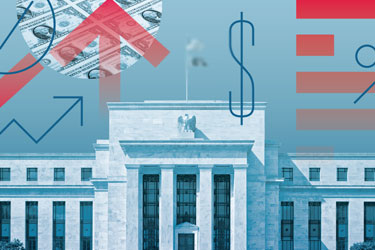The world's three central banks may cut interest rates simultaneously in September, the economic outlook is cautiously optimistic
Citibank economists in the latest release of the global economic outlook report pointed out that the Federal Reserve, the European Central Bank and the Bank of England are likely to cut interest rates in September this year. This forecast is based on a comprehensive analysis of the current global economic situation, and takes into account a number of key factors, including the continued resilience of the service sector, inflation continues to be higher than the official target, as well as geopolitics to bring continued pressure.

Services inflationary pressures remain as economic growth slows
Despite these challenges, Citi's forecast for global economic growth this year remains unchanged at 2.3%, a slowdown from last year's 2.7%. This slowdown is particularly evident in developed markets.
Citi believes that the expected rate cuts will help steer consumer spending towards goods, which could help ease a tight labor market and curb inflation in the services sector. This forecast is based on a shift in consumption patterns during the epidemic, as well as the introduction of new technology products, particularly artificial intelligence devices.
Expectations for rate cuts by major central banks: synchronized action, cautious response
Citi's team of analysts forecasts that the Fed, ECB, and BoE will all begin cutting rates in September, and that this trend is likely to continue through 2025. This forecast reflects the inflationary pressure situation within each economy, as well as the preference of the major central banks to act in concert as economic conditions allow.
For the Fed, although the market had been optimistic about the Fed's rate-cutting program, the high inflation data in the first quarter shattered such expectations. Currently, the market expects the Fed will only cut rates one or two times this year.
In the eurozone, the European Central Bank has taken action earlier this month to cut the deposit rate by 25 basis points, but issued a more hawkish market communication, as the ECB is still concerned about the recent rapid rise in payrolls data, which is an important indicator of inflationary pressures. The bank's future rate-cutting decisions are expected to depend on payroll inflation and the economic recovery situation. However, given the continued tightening of monetary policy and fiscal policy adjustments, the eurozone economy is currently in a relatively constrained stage of recovery, so Citi forecasts that the bank will cut rates at least two more times this year.
The Bank of England, for its part, has shown caution in the face of higher-than-expected inflation data, so Citi believes the BoE may delay action until September, when it will join the Fed and the European Central Bank in cutting rates.
Cautious optimism, focus on risks
Overall, Citi is cautiously optimistic about the global economic outlook. While the three major central banks are expected to cut rates in September in tandem, future economic development still faces many challenges, including inflationary pressures, geopolitical risks and potential recessionary risks. Investors need to pay close attention to the policy moves of central banks and the latest developments in the global economy in order to make informed investment decisions.
MORE FROM WIRED

- Gucci's First-Half Sales Plunge Nearly 20% as Kering's Earnings Hit Red Lights

- Changes In The ETF Market: Rising Fees Raise Investor Concerns

- The Impact of the U.S. Election on the Consumer Market and Retailers' Responses
- Aug,28,2024

- Uncertainty and Market Forecasts on Oil Price Trends
- Aug,21,2024

- Market Jitters: Nikkei Plunges Amid Global Economic Concerns
- Aug,14,2024

- The Impact of the Fed's Successive Interest Rate Hikes on Global Financial Markets
- Aug,07,2024

- French Election "Surprise" Shocks Markets: Euro, Gold Price Volatility and Investment Strategy Adjustments
- Jul,31,2024